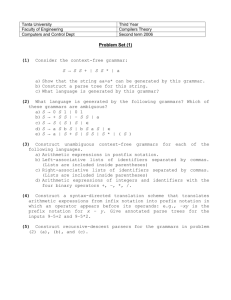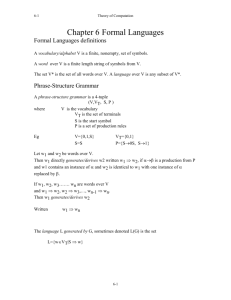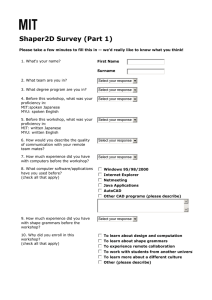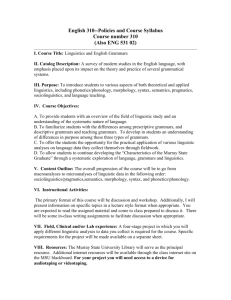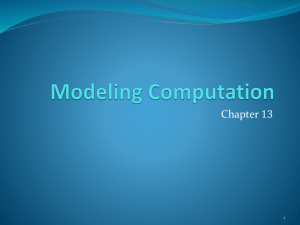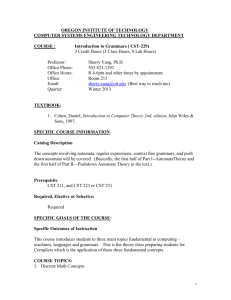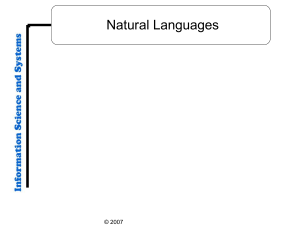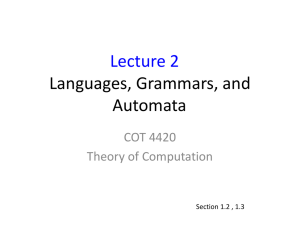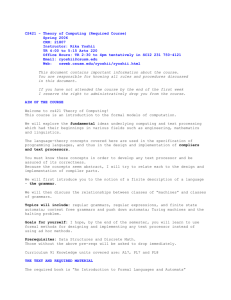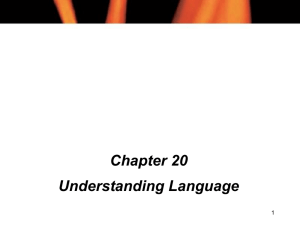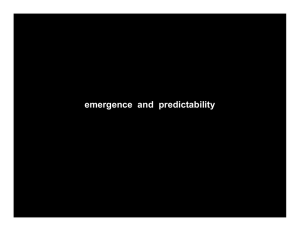Grammars A is a set of rules which are used to construct...
advertisement
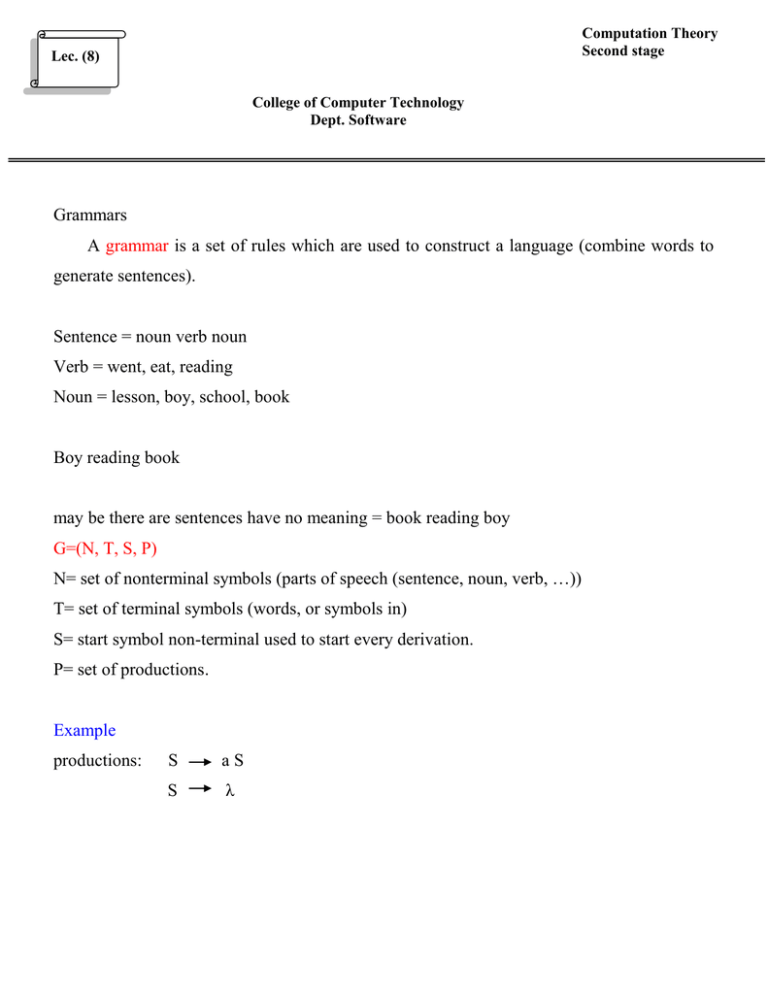
Computation Theory Second stage Lec. (8) College of Computer Technology Dept. Software Grammars A grammar is a set of rules which are used to construct a language (combine words to generate sentences). Sentence = noun verb noun Verb = went, eat, reading Noun = lesson, boy, school, book Boy reading book may be there are sentences have no meaning = book reading boy G=(N, T, S, P) N= set of nonterminal symbols (parts of speech (sentence, noun, verb, …)) T= set of terminal symbols (words, or symbols in) S= start symbol non-terminal used to start every derivation. P= set of productions. Example productions: S aS S λ The derivation for aaaa is: S => aS => aaS => aaaS => aaaaS => aaaaλ = aaaa RE= a+ Example productions: S S a S λ S SS / a / λ Derivation of aa S => SS => SSS => SSa => SSSa => SaSa => λaSa => λaλa = aa SS TYPES OF GRAMMAR Type 0: unrestricted grammars include all formal grammars. They generate exactly all languages that can be recognized by a Turing machine. The language that is recognized by a Turing machine is defined as all the strings on which it halts. Type 1: context-sensitive grammars generate the context-sensitive languages. These grammars have rules of the form KAL I KJL with A a nonterminal and K, L and J strings of terminals and nonterminals. The strings K and L may be empty, but J must be nonempty. The rule S I M is allowed if S does not appear on the right side of any rule. The languages described by these grammars are exactly all languages that can be recognized by a non-deterministic Turing machine whose tape is bounded by a constant times the length of the input. Type 2: context-free grammars generate the context-free languages. These are defined by rules of the form A I J with A a nonterminal and J a string of terminals and nonterminals. These languages are exactly all languages that can be recognized by a non-deterministic pushdown automaton. Context free languages are the theoretical basis for the syntax of most programming languages.

